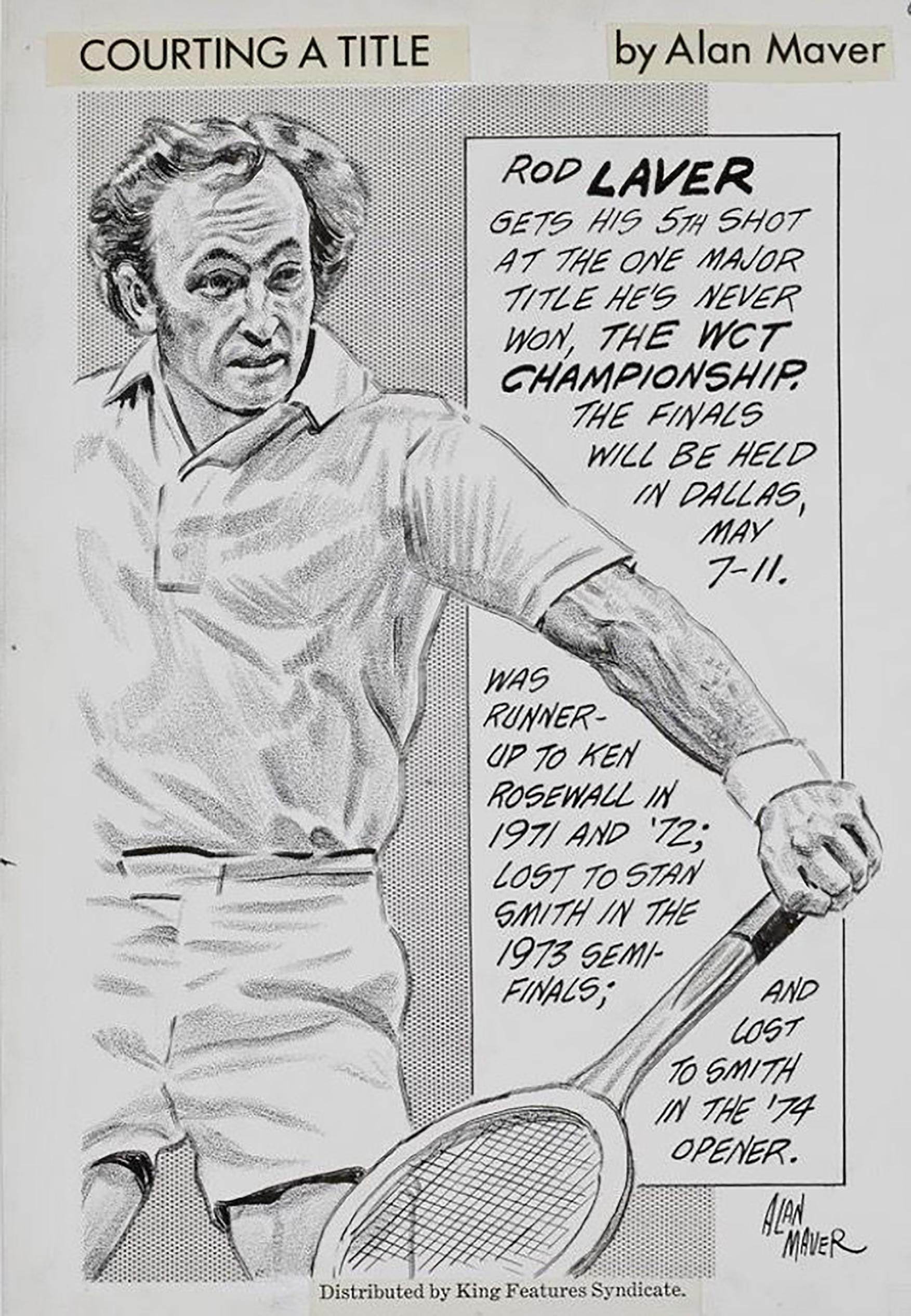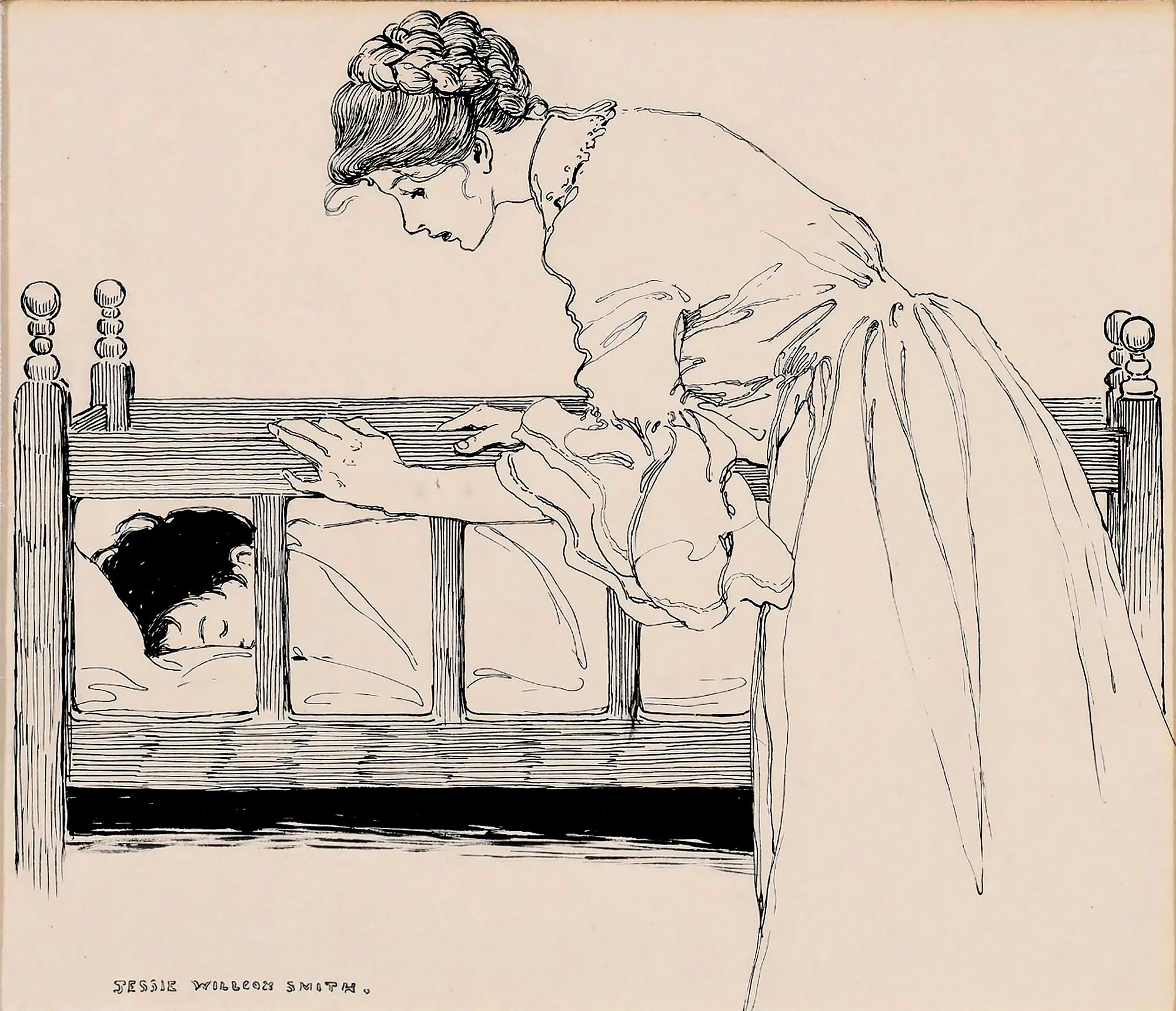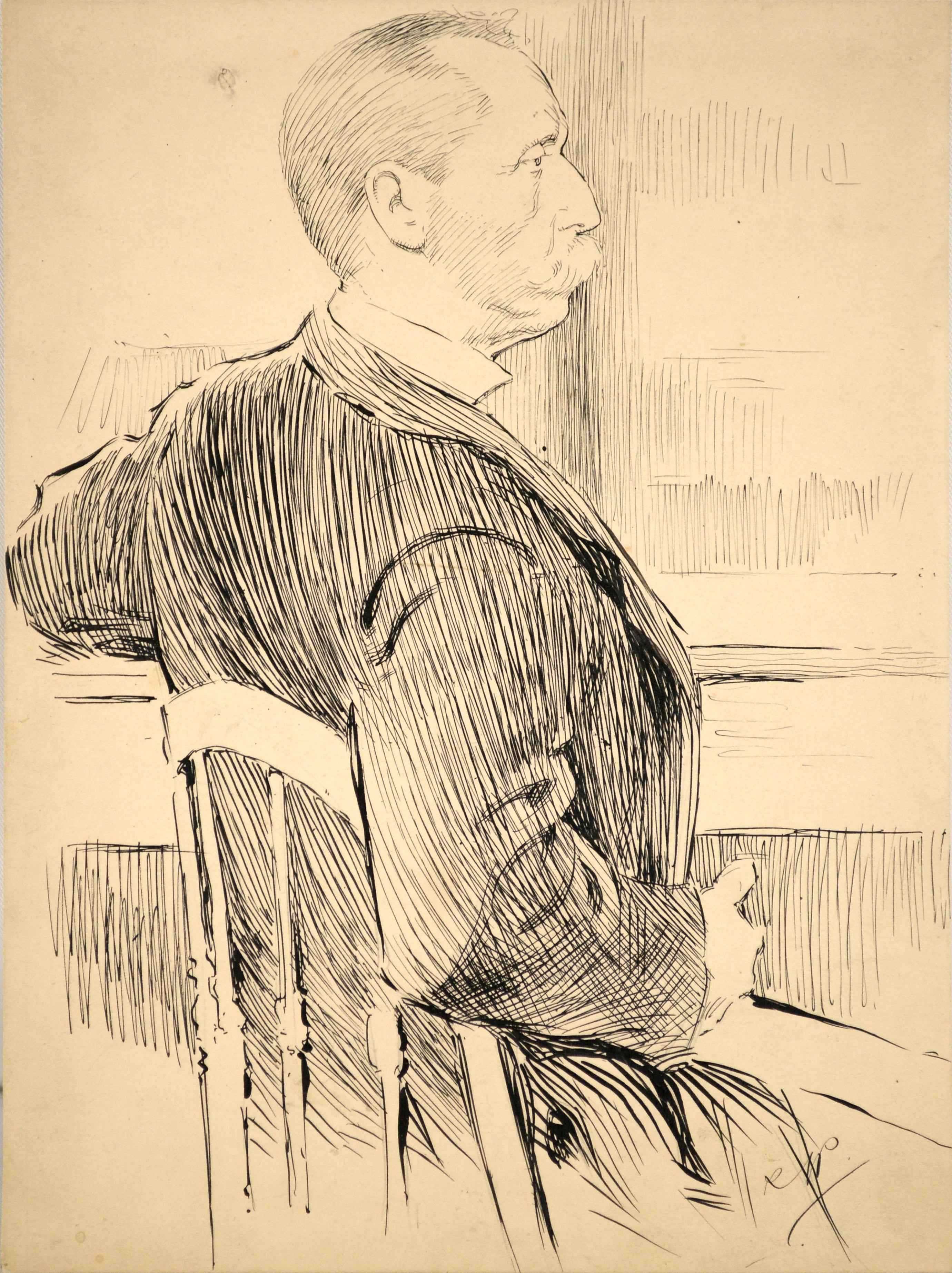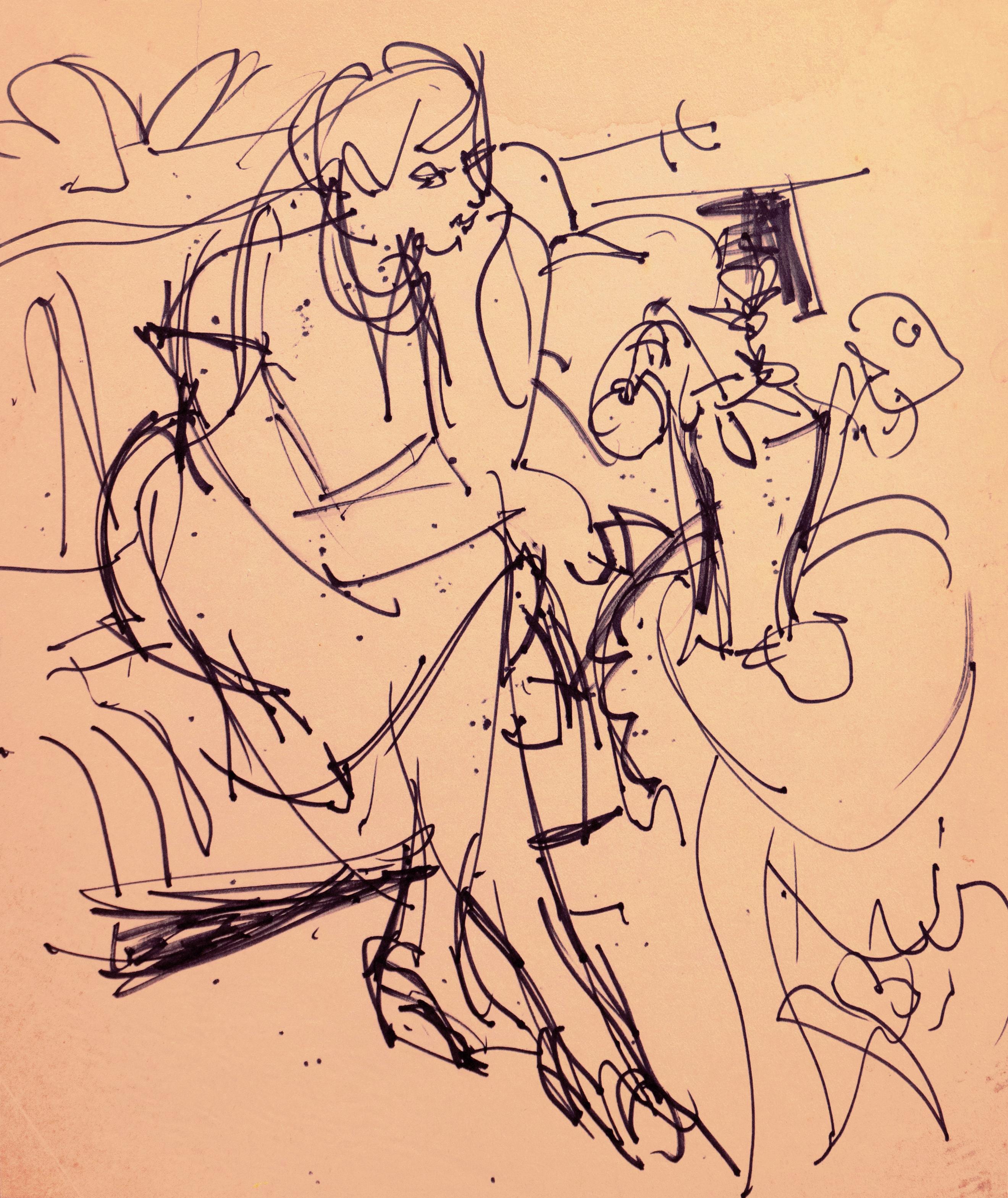Items Similar to Abstract Silhouette Hat Portraits - Female Illustrator of Golden Age
Want more images or videos?
Request additional images or videos from the seller
1 of 12
Jessie GillespieAbstract Silhouette Hat Portraits - Female Illustrator of Golden Age1910
1910
About the Item
115 years after they were created, one can view these silhouettes differently than the artist’s intent.
After all, the genesis of this work was an editorial illustration for Life Magazine to showcase elaborate women’s hats.
They were done for a commercial assignment with a deadline, and picky editors were overseeing the final work.
Today, they have a dual meaning.
These charming silhouettes are abstractions as much as they are representations.
Moreover, each one is a compact little gem stuffed with observational detail.
Golden Age female illustrator Jesse Gillespie's mastery of technical skill, is apparent in minute details and composition.
Young women, old women, pendants, necklaces, feathers, and laced vails all contribute to the works understated complexity.
The identity of the subjects are revealed by small areas of exposed neck and chin.
As the viewers eyes goes from left to right - all six silhouettes read as fashion hieroglyphs in a sentence with a visual rhythm and cadence. .
Initialed JG lower right., Matted but not framed.
Published: Life Magazine, March 17th, 1910.
Provenance: Honey and Wax Bookstore
________________________________
From Wikipedia, the free encyclopedia
Jessie Gillespie Willing (March 28, 1888 – August 1, 1972) was an American illustrator during the Golden Age of illustration. She was considered the foremost silhouette illustrator of her time, although she did traditional illustration as well. Willing illustrated for books and magazines including Life, The Ladies' Home Journal, Woman's Home Companion, Mother and Child, McClure's Magazine, Childhood Education, the Sunday Magazine, Association Men (the magazine of the YMCA), Farm and Fireside, Every Week, Children: The Magazine for Parents (which became Parents Magazine), and the American Magazine. She is perhaps most well known for her work for the Girl Scouts.
Early life
Willing was born in Brooklyn on March 28, 1888 to John Thomson Willing (August 4, 1860 – July 8, 1947)[1][2] and Charlotte Elizabeth Van Der Veer Willing (December 1, 1859 – March 4, 1930).[3] Thomson Willing was a noted illustrator and art editor. He was also well known for finding new artistic talent. Jessie Willing was the eldest of three children. Her brother Van Der Veer (November 30, 1889 – January 14, 1919), who died of pneumonia at the age of 29, was an advertising agent.[4] Her sister Elizabeth Hunnewell Willing (July 26, 1908 – August 15, 1991) was one of the first women to graduate from the Philadelphia Divinity School.[5][6] Elizabeth married the Rev. Orrin Judd, rector of St. Mary's Episcopal Church, on September 22, 1931, and was active in church work.[citation needed]
The Willing family moved to the Germantown neighborhood of Philadelphia in 1901 or 1902. Jessie Willing attended the Stevens School, from which she graduated in 1905. She then went on to attend the Philadelphia Academy of Fine Arts from 1906 to 1907.[7][8]
Career
Willing used her middle name Gillespie as her professional surname. She also often signed her illustrations J.G.[9] The story goes that the art editor of Life magazine was in Thomson Willing's office when he was the art editor of the Associated Sunday Magazine syndicate. Thomson Willing had some of Jessie's artwork on his desk, which the Life editor saw and admired. He asked for the artist's information so that he could give her freelance work. Thomson Willing did not want to be accused of nepotism so he persuaded Jessie to use Jessie Gillespie as her professional name, which she did.[10][11]
In addition to her extensive illustration work, Willing was also the editor of Heirlooms and Masterpieces from 1922 to 1931 and the art editor of Jewelers' Circular-Keystone from 1933 to 1939.[12] She specialized in jewelry publicity and advertising. In 1966 she won the Gold medal of the Printing Week Graphic Arts Exhibit in Philadelphia for her Christmas catalog for J.E. Caldwell Co., Philadelphia.
Willing was a member of the Plastic Club of Philadelphia,[13] the American Institute of Graphic Arts (AIGA) and the National Arts Club of New York.[14] She was an honorary life member of the National Arts Club[15] and served on its Board of Governors from 1941-1970. In 1963, she received the Gold Medal of the National Arts Club in recognition of 32 years of selfless devotion.[15] Additionally, she was the national director of the American Institute of Graphic Arts (AIGA) from 1943 to 1946.[15] Previous to this she served as the Program Chairman of the AIGA and in that position she put together a travelling exhibit on the "history of narrative art from the first recorded picture story to the comic book of the twentieth century."[16][17]
Illustrations in books
With Tongue and Pen--Frederick Bair, et al. (MacMillan, 1940)
Masoud the Bedouin--Alfred Post Carhart (Missionary Education Movement, 1915)
The Path of the Gopatis--Zilpha Carruthers (National Dairy Council, 1926)
The Schoolmaster and His Son: A Narrative of the Thirty Years War--Karl Heinrich Caspari (Lutheran Publication Society, 1917)
On a Rainy Day--Dorothy Canfield Fisher and Sarah Scott Fisher (A.S. Barnes and Co., 1938)
Book of Games for Home, School and Playground--William B. Forbush and Harry R Allen (John C. Winston, 1927)
Making Life Count--Eugene C. Foster (Interchurch Press, 1918)
Precious Books: Why and Where They are Treasured--Jessie Gillespie (A.T. Walraven Book Cover Co., 1933)
The Story of Little Goody Two-Shoes--(Grossett & Dunlap, 1944)
The Wisdom of Professor Happy, by the Professor Himself--Cliff Goldsmith (Child Health Organization of America, 1922)
Cho-Cho and the Health Fairy--Eleanor Glendower Griffith (MacMillan Co., 1922)
Travels of a Rolled Oat--Grace T. Hallock (Quaker Oats Co, 1929)
Grain Through the Ages--Grace T. Hallock (Quaker Oats Co., 1931)
A Flower of Monterey: A Romance of the Californias--Katherine B. Hamill (The Page Company, 1921)
Miss Gay's Adventures in First Aid, Series No. II: Artificial Respiration and the Need for Inhalators--Margaret Daly Hopkins (Hopkins Chart Co. 1936)
Ann of Ava--Ethel Daniels Hubbard (Missionary Education Movement, 1913)
The Moffats--Ethel Daniels Hubbard (Missionary Education Movement, 1917)
Spending the Day in China, Japan and the Philippines--Sally Lucas Jean and Grace T. Hallock (Harper and Brothers, 1932)
A Lovely Gate Set Wide: A Book of Catholic Verse for Young Readers--Sister Patrice Margaret (The Bruce Publishing Co., 1946)
The Pageant of Protestantism: Celebrating the Quadricentennial of the Reformation--Harriet Earhart Monroe (The Lutheran Publication Society, 1917)
Is this Tomorrow?--A. E. Osmond (Ernest Benn, 1949)
All Around the clock: Tales of Service and Sport--George Frederick Park (The Lutheran Publication Society, 1917)
Grif of Greenbrier Farm--George Frederick Park (The Lutheran Publication Society, 1917)
Everychild's Book Illustrated--Antoinette Rotan Peterson (MacMillan Company, 1922)
Rhymes of Cho Cho's Grandma--Mrs. Frederick Peterson (Children's Health Organization of America, 1920)
Living with the Family--Hazel Huston Price (Little, Brown and Co., 1942)
The Knight in Grey: A Historical Novel--Marie E. Richard (The Lutheran Publication Society, 1913)
The Honey Pot,Or, In the Garden of Lelita--Norval Richardson (L.C. Page & Co., 1912)
The Three Kings, translated from the German by Gustav Nieritz--Rebecca H. Schively (The Lutheran Publication Society)
The Singing Weaver and Other Stories--Julius and Margaret Seebach (The Lutheran Publication Society, 1917)
Other Peoples' Children--Margaret R. Seebach (The Lutheran Publication Society, 1914)
Soldier Silhouettes on our Front--William Le Roy Stidger (Scribner, 1918)
Star Dust from the Dugouts: A Reconstruction Book--William Le Roy Stidger (The Abingdon Press, 1919)
Health--C.E. Turner and Georgie B. Collins (D.C. Heath and Company, 1924)
The What-Shall-I-Do-Girl: Or, the Career of Joy Kent--Isabel Waitt (L.C. Page & Co., 1913)
The Birds' Christmas Carol--Mrs. Kate D. Wiggin (Houghton Mifflin Company, 1941)
The Pleasuring of Susan Smith--Helen Maria Winslow (Sir Isaac Pitman & Sons, 1912)
Illustrations appearing in Life magazine:
Adele--, A-Dell, “Adele!, July 9, 1914[18]
All, All are Gone, The Old Familiar Faces, April 7, 1910[19]
And I Sent Her Only a Christmas Card!, December 1, 1910[20]
At Any Matinee, April 15. 1909[21]
At the Afternoon Tea: ’The Ill-bred Line, August 1, 1912[22]
Baseball Term: “Perfect Control But No Speed, October 26, 1911[23]
Blessed Be the Tie That Binds, November 10, 1910[24]
Bride: Quick, John! There’s Another Grain!, March 17, 1910[25]
Bubble, Bubble, Toil and Trouble, June 15, 1911[26]
The Date Palm and the Rubber Plant, July 31, 1919[27]
Desperation, Inspiration, Anticipation, Realization, March 1, 1915[28]
The Difference Between Counter Irritants and Counter Attractions, September 8, 1910[29]
A Directoire Wash Day, March 11, 1909[30]
Dutch Treat, May 28, 1914[31]
Grandmothers, March 11, 1909[32]
Hark the Herald Angels Sing, December 7, 1911[33]
In the Hands of the Receiver, December 7, 1916[34]
January First: God Rest You, Merry Gentlemen. Let Nothing You Dismay, December 29, 1910[35]
A Jug of Wine and Thou, March 31, 1910[36]
The Land(ing) of the Free, December 15, 1910[37]
Metamorphosis, April 29, 1909[38]
Miss’ill Toe The Mark, December 7, 1911[39]
The Modern Pied Piper, March 24, 1910[40]
More Speed, Less Haste, January 6, 1910[41]
Needs Must When Fashion Drives, March 2, 1911[42]
Oh, the Difference Between Kissing a Miss, and Missing a Kiss!, December 25, 1913[43]
Oh, Woman in Your Hours of Ease, October 13, 1910[44]
Palms, March 31, 1910[45]
Peace on Earth, Good Will Toward Men, December 2, 1909[46]
The Right Kind of ‘Protection, September 7, 1911[47]
Sister! As Others See Us, April 7, 1910[48]
So Thoughtful of You—Just What I Wanted, December 2, 1909[49]
Some are Born Rich, Some Achieve Riches, and Some Have Riches Thrust Upon Them[50]
Styles for 1909: But Where Do We Come In?, December 3, 1908[51]
Syncopation, Desperation, Renunciation, Abnegation, Consummation But ----ation, August 31, 1916[52]
The Theatre Train, March 9, 1911[53]
’There was no room for them in the inn’.—St. Luke 2:7, December 2, 1915[54]
They Toil Not, Neither Do They Spin, March 3, 1910[55]
To Them That Hath, April 27, 1911[56]
Town and Country, May 6, 1909[57]
Trying Psycho-Physico Suggestion, September 22, 1910[58]
Valentines, February 2, 1911[59]
What Next? January 28. 1909[60]
The Woman Tempted Me and I Did Eat, March 23, 1911[61]
A Women’s Work is Never Done, November 26, 1908[62]
Illustrations in other magazines
"The Kindergarten and the Nursery School Movement"--Julia Wade Abbot (Mother and Child, February 1923)[63]
"Health Habits in the Kindergarten"--Julia Wade Abbot (Mother and Child, December 1921)[64]
"The Blue Store: A Bit of Business Magic"--Richard Bracefield (McClure's, July 1913)[65]
"Lucy and the Fairies"--Margaret Brearley (Childhood Education, September 1927)[66]
"Chicago, the Healthiest City"--Herman N. Bundesen (Chicago's Health, June 29. 1926)[67]
"Prevent Preventable Diseases"--Herman N. Bundesen (Chicago's Health, October 12, 1926).[68]
"Afternoon Tea at Washington"--Adele Steiner Burleson (Sunday Magazine, December 2, 1913)[69]
"The Gym or the 'Jimmies'"--Ellis Parker Butler (Association Men, September 1927)[70]
"The Thing You Want May Be Right at Your Elbow"--J.S. Cates (Farm and Fireside, November 1919)[71]
"Well, What's New in Your Line?"--James H. Collins (Every Week, March 2, 1918)[72]
"Does Your Farming Ever Take You Back to School?"--James H. Collins (Farm and Fireside, March
"The Child at the Christmas Play"--Jessie Collin (Ladies' Home Journal, December 1914)[74]
"Prohibition--And Your Farm"--William Harpter Dean (Fire and Fireside, July 1919)[75]
"The Comedy of Clothes"--Jessie Gillespie (Sunday Magazine, January 3, 1915)[76]
Cover Art--Jessie Gillespie (The Smart Set, March 1913)[77]
Cover Art--Jessie Gillespie (Sunday Magazine, February 4, 1912)[78]
Cover Art--Jessie Gillespie (Sunday Magazine, April 7, 1912)[79]
Cover Art--Jessie Gillespie (Association Men, December 1922)[80]
"Frontispiece"--Jessie Gillespie (Mother and Child, February 1923)[81]
"Panta=loons"--Jessie Gillespie (Sunday Magazine, October 25, 1914)[82]
"The Comic in Dress"--Grace Margaret Gould (Woman's Home Companion, March 1915)[83]
"The Deceitful Mirror"--Grace Margaret Gould (Woman's Home Companion, September 1913)[84]
"Good Lucks: After Vacation Comes Renovating Time for Faces"--Grace Margaret Gould (Woman's
Vogue Magazine Covers
- Creator:Jessie Gillespie (1888 - 1972, American)
- Creation Year:1910
- Dimensions:Height: 4.25 in (10.8 cm)Width: 20.5 in (52.07 cm)Depth: 1 in (2.54 cm)
- Medium:
- Movement & Style:
- Period:
- Condition:Good Condition: some light surface grime - lower right corner is broken but it's outside of the live area.
- Gallery Location:Miami, FL
- Reference Number:1stDibs: LU385313678792
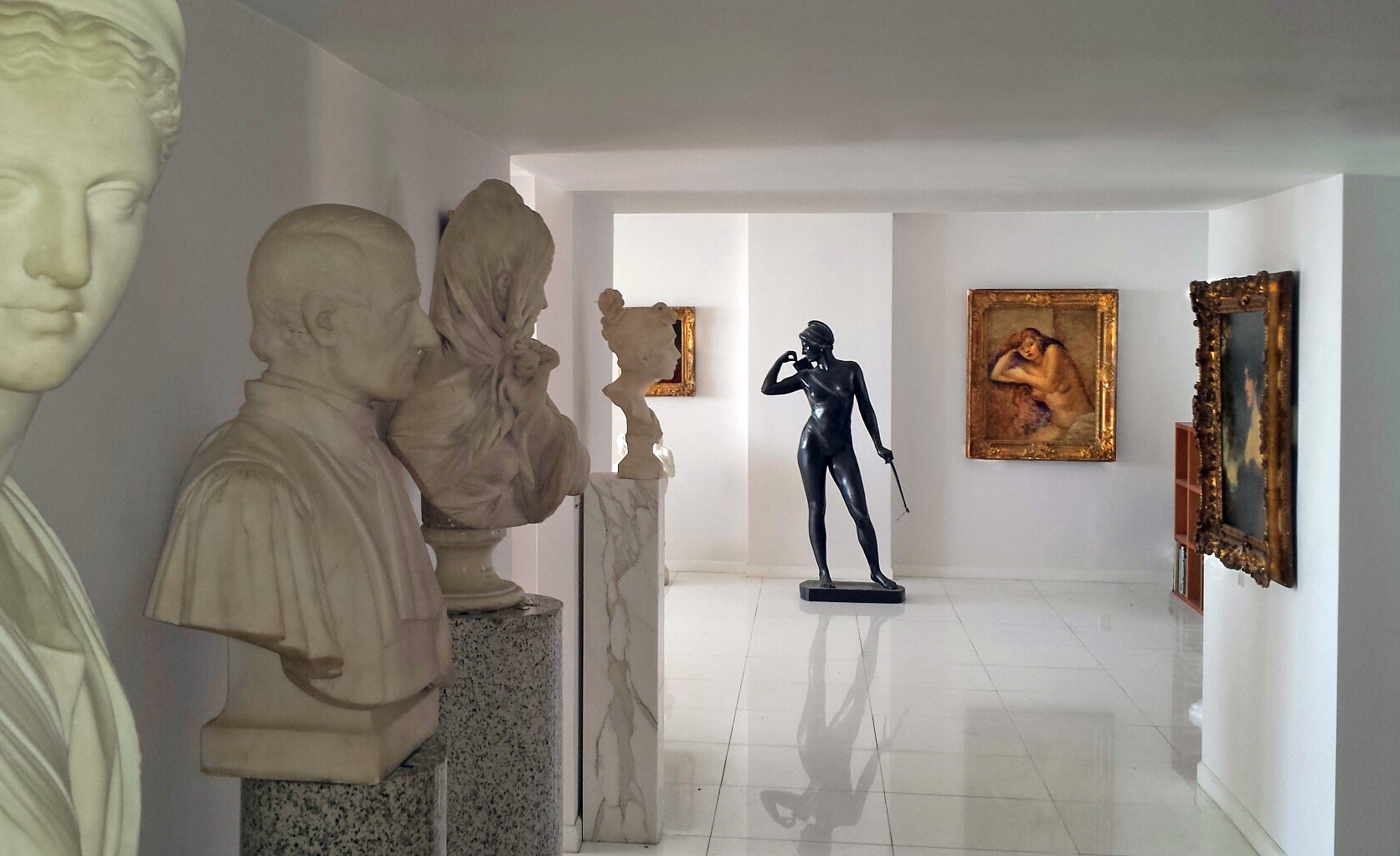
About the Seller
4.9
Gold Seller
These expertly vetted sellers are highly rated and consistently exceed customer expectations.
Established in 2005
1stDibs seller since 2016
102 sales on 1stDibs
Typical response time: 1 hour
- ShippingRetrieving quote...Ships From: Miami, FL
- Return PolicyA return for this item may be initiated within 3 days of delivery.
More From This SellerView All
- Mother and Child, Golden Age of IllustrationBy Jessie Willcox SmithLocated in Miami, FLAmerica's greatest female illustrator draws a heartwarming picture of a mother putting to bed her child. Motherly love towards their children is the artist's most iconic theme. This ...Category
Early 1900s Art Nouveau Figurative Drawings and Watercolors
MaterialsInk, Illustration Board, Pen
- Apocalypse, Catastrophic Destruction of the World, Surrealism - Life MagazineLocated in Miami, FLApocalypse in 1962? At the height of the Cold War, Life Magazine commissions an illustration that describes the world's end by means other than a nuclear war with Russia. Richard Erdoes brilliantly illustrates the work with his highly stylized painting technique. My favorite part of the work is on the left side showing a group of people packed together as they fall into oblivion. A clear reference would be Hieronymus Bosch's "The Last Judgment " Once Again the World Ends." Illustration published in Life Magazine, Feb. 9, 1962 Signed in lower right image. Unframed Richard Erdoes (Hungarian Erdős, German Erdös; July 7, 1912 – July 16, 2008) was an American artist, photographer, illustrator and author. Early life Erdoes was born in Frankfurt,[1] to Maria Josefa Schrom on July 7, 1912. His father, Richárd Erdős Sr., was a Jewish Hungarian opera singer who had died a few weeks earlier in Budapest on June 9, 1912.[2] After his birth, his mother lived with her sister, the Viennese actress Leopoldine ("Poldi") Sangora,[3] He described himself as "equal parts Austrian, Hungarian and German, as well as equal parts Catholic, Protestant and Jew..."[4] Career He was a student at the Berlin Academy of Art in 1933, when Adolf Hitler came to power. He was involved in a small underground paper where he published anti-Hitler political cartoons which attracted the attention of the Nazi regime. He fled Germany with a price on his head. Back in Vienna, he continued his training at the Kunstgewerbeschule, now the University of Applied Arts, Vienna.[5] He also wrote and illustrated children's books and worked as a caricaturist for Tag and Stunde, anti-Nazi newspapers. After the Anschluss of Austria in 1938 he fled again, first to Paris, where he studied at the Academie de la Grande Chaumiere, and then London, England before journeying to the United States. He married his first wife, fellow artist Elsie Schulhof (d. xxxx) in London, shortly before their arrival in New York City. In New York City, Erdoes enjoyed a long career as a commercial artist, and was known for his highly detailed, whimsical drawings. He created illustrations for such magazines as Stage, Fortune, Pageant, Gourmet, Harper's Bazaar, Sports Illustrated, The New York Times, Time, National Geographic and Life Magazine, where he met his second wife, Jean Sternbergh (d. 1995) who was an art director there. The couple married in 1951 and had three children.[6] Erdoes also illustrated many children's books. An assignment for Life in 1967 took Erdoes to the Pine Ridge Indian Reservation for the first time, and marked the beginning of the work for which he would be best known. Erdoes was fascinated by Native American culture, outraged at the conditions on the reservation and deeply moved by the Civil Rights Movement that was raging at the time. He wrote histories, collections of Native American stories...Category
1960s Surrealist Figurative Drawings and Watercolors
MaterialsMixed Media, Illustration Board, Board, Gouache
- Glamour Fashion Portrait of Model Sara Thom - Mid CenturyBy Richard StoneLocated in Miami, FLDick Stone was a top mid-century illustrator who worked for the most famous brands. He was an assignment artist hired by such esteemed Ad Agencies as BBDO ...Category
1950s Modern Portrait Drawings and Watercolors
MaterialsCasein, Board, Pen
- Native American Indian Portrait in Pen and InkBy Murray TinkelmanLocated in Miami, FLStunning use of cross-hatching. Close up this is an abstract drawing. Ink on Strathmore Bristol Board - Perfect Condition and looks better in person. Elegantly matted but not framedCategory
1970s American Realist Portrait Drawings and Watercolors
MaterialsInk, Pen
- Wonderland Tale - Fairy Tale - Female IllustratorLocated in Miami, FLWonderland Tale - Fairy Tale - Female Illustrator - The work is meticulously rendered in an exacting technique of line to the point of wonderment. Yet, Baxter can obtain an ethereali...Category
1950s English School Figurative Drawings and Watercolors
MaterialsInk, Pen
- The Little Mermaid - Fairy Tales - English Female Illustrator Pen and InkLocated in Miami, FLPioneering English Female Illustrator Helen Stratton masterfully renders in pen and ink a scene from "The Little Mermaid" in George Newnes's 1899 editi...Category
1890s Pre-Raphaelite Figurative Drawings and Watercolors
MaterialsInk, Paper, Pen
You May Also Like
- Courting a TitleLocated in Fort Washington, PAMedium: Pen and Ink on Illustration Board Signature: Signed Lower Right Contact for dimensions.Category
20th Century Figurative Drawings and Watercolors
MaterialsIllustration Board, Ink, Pen
- 19th C. Newspaper Illustration of Hiram H. Hobbs, Foreman of the Grand Jury 1898Located in Soquel, CAHistorical late 19th century portrait of Hiram H. Hobbs, Foreman of the Grand Jury of San Francisco y Richard Langtry Partington (American, ...Category
1890s American Impressionist Portrait Drawings and Watercolors
MaterialsIllustration Board, India Ink
- 'Woman Seated', Paris, Louvre, Salon d'Automne, Académie Chaumière, LACMA, SFAABy Victor Di GesuLocated in Santa Cruz, CAStamped, verso, with estate stamp and estate wax seal for Victor Di Gesu (American, 1914-1988) and created circa 1955 Winner of the Prix Othon Friesz, Victor di Gesu first attended ...Category
1950s Post-Impressionist Figurative Drawings and Watercolors
MaterialsBoard, Paper, Ink, Pen
- Portrait of George Arliss in Conte Crayon on Cardstock 1934Located in Soquel, CAStately portrait of George Arliss by Ivan Opffer (Danish, 1897-1980). Mr. Arliss is depicted wearing his signature monocle, looking directly at the viewer. Although this piece appears to be done rapidly, there is a clear confidence in Opffer's work - he was an accomplished portrait artist - and the resemblance to the subject is unmistakable. George Arliss (born Augustus George Andrews; 10 April 1868 – 5 February 1946) was an English actor, author, playwright, and filmmaker who found success in the United States. He was the first British actor to win an Academy Award – which he won for his performance as Victorian-era British prime minister Benjamin Disraeli in Disraeli (1929) – as well as the earliest-born actor to win the honour. He specialized in successful biopics, such as Disraeli, Voltaire (1933), and Cardinal Richelieu (1935), as well as light comedies, which included The Millionaire (1931) and A Successful Calamity (1932). Signed and dated "Ivan Opffer 1934" in the lower right. Titled "Mr. Arliss" in the lower left. Presented in a new off-white mat with foamcore backing. Mat size: 22"H x 16"W Art size: 17.5"H x 12"W Ivan Opffer (Danish, 1897-1980) was born in Nyborg, Denmark, on June 4, 1897, to a family of Danish scholars and journalists. His brother was Emil Opffer, a Danish merchant seaman and journalist who was known for his relationship with American writer Hart Crane. Ivan was raised in Mexico City and New York, where his anarchist father was the editor of a radical Danish-language newspaper. His involvement in painting and drawing began at an early age. At a summer workshop, he met and studied drawing with Winslow Homer, then went on to study at the National Academy of Design and the Art Students League of New York. When the US entered World War I, Opffer was one of the members of the American Army Camouflage Corps, headed by Homer Saint-Gaudens (whose mother was a relative of Winslow Homer), the son of Augustus Saint-Gaudens. As a camoufleur, Opffer served with other artists and architects, some of whom became well-known, including Barry Faulkner, Sherry Edmundson Fry, Kimon Nicolaides, Robert Lawson, Abraham Rattner, Kerr Eby, and others. It was this same unit, while still in training in at Camp American University in Washington DC, that launched a camp newspaper called The Camoufleur. Only three issues were published before the unit’s deployment to France in late 1917. In the October 31 issue, a satirical portrait by Opffer of Homer Saint-Gaudens (titled “Our Boss”) was published on page 5. After the war, Opffer returned to New York, where he became known for his caricatures of leading Modern writers, among them James Joyce, Edgar Lee Masters, Siegfried Sassoon, George Bernard Shaw, Carl Sandburg, G.K. Chesterton, and Thomas Mann. In the years between the wars, Opffer married Betty à Beckett Chomley, and settled in Paris, where he was a student at the Academie Julliard. He also lived in London and Copenhagen, where his drawings were frequently published in newspapers and magazines. With the outbreak of World War II, he and his family returned to New York and lived in Greenwich Village. Among his friends in that era were William Butler Yeats, F. Scott and Zelda Fitzgerald...Category
1930s American Impressionist Portrait Drawings and Watercolors
MaterialsConté, Postcard, Illustration Board
- 'Vancouver Girl', Young Woman with Bobbed Copper Hair, AIC, Paris, New YorkLocated in Santa Cruz, CASigned verso, 'George Wilburton Colby' (American, 1859-1922) and dated 1920. George Colby was a member of the old Art League and a life member of the Chicago Art Institute. After hi...Category
1920s Impressionist Figurative Drawings and Watercolors
MaterialsPaper, Pastel, Illustration Board
- Silhouette, Portrait of a LadyLocated in Middletown, NYCollage heightened in gilt ink laid down to card stock. Light band of moisture stain running horizontally along the top margin, above the image area. Light attenuation, otherwise in good condition. Presented beautifully in a period burled walnut frame. _______ William Hubard, sometimes known as "Master Hubard," was a British born American artist who settled in Boston in about 1820, in his late teenage years. He opened a gallery on the corner of Milk and Congress Streets at Julien Hall, in the heart of Boston's Financial District. His gallery became well known for Hubard's silhouette's, which he produced prodigiously for sitters in moments, using nothing but black paper, a pair of scissors, and sometimes a dash of gold ink. Hubard filled his gallery with silhouette likenesses of famous people, beggars, fiddlers, great works of architecture, and all types of animals. Each evening he presented a panharmonicon concert in his gallery, and for 50¢ the public was invited to enjoy the gallery, the concert, and have their likeness created by hand in moments by Hubard. In the early 1830s Hubard married the daughter of a wealthy patron, and moved to Richmond, Virginia, where he won major commissions to paint portraits of notables such as Andrew Jackson, and James Marshall, as well as several commissions from the Virginia General Assembly. Hubard enjoyed a successful career until his death in February 1862, when he was killed in an accidental explosion while making munitions for the Confederate States...Category
Mid-19th Century Victorian Portrait Drawings and Watercolors
MaterialsInk, Handmade Paper, Mixed Media
